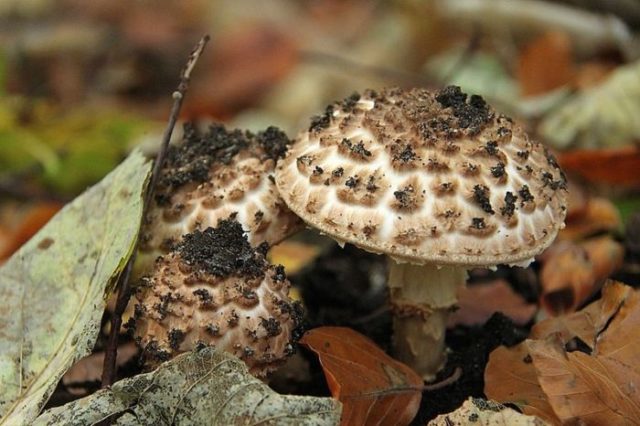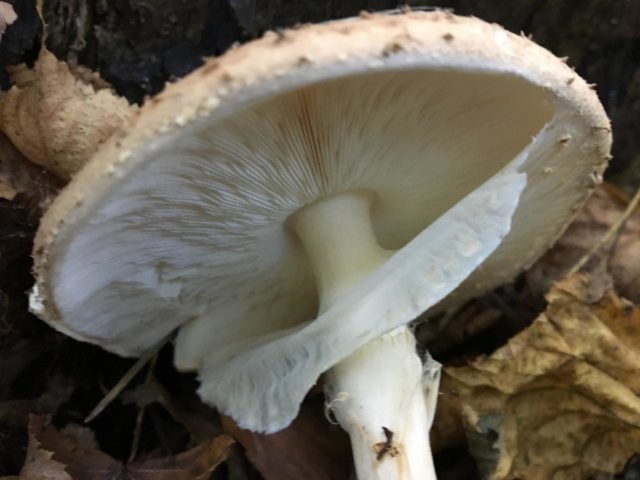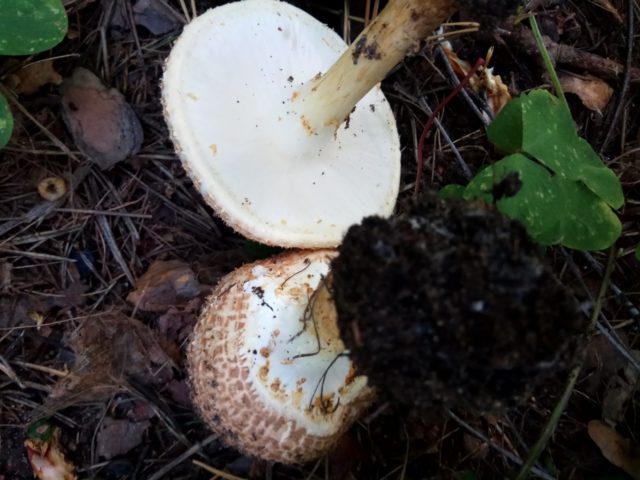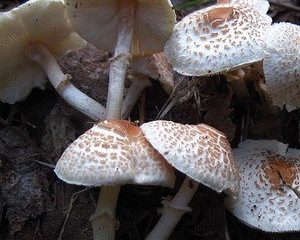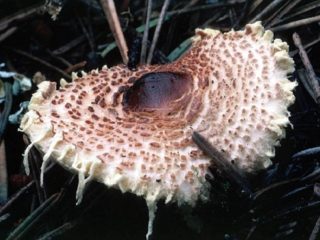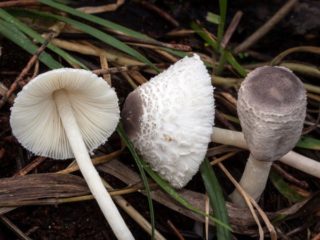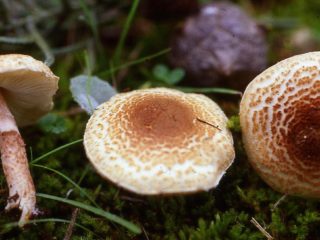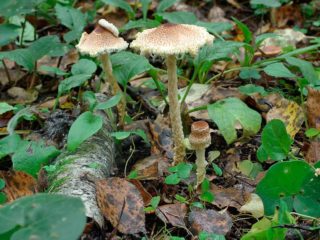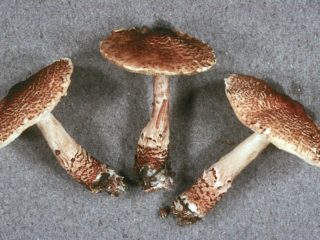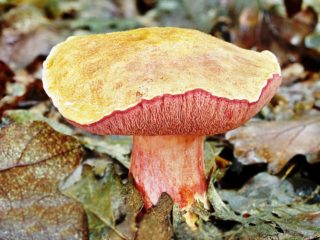Content
Lepiota sharp-scaled (Lepiota acutesquamosa or Lepiota aspera), despite the external similarity with edible umbrellas, itself scares away mushroom pickers with its unpleasant aroma.
Lepiota is also called a pointed or rough umbrella.
The first mentions date back to 1793. The species was described by the microbiologist H. G. Person. And the mushroom got its modern name thanks to another scientist - the Frenchman Lucien in 1886.
What do sharp-scaled lepiots look like?
The description of the scabrous lepiota will help to distinguish it from the edible umbrella and champignons. They are from the same family.
Hat
This primarily concerns the size and shape of the cap. Even in an adult sharp-scaled lepiota, it is small, no more than 4-5 cm in diameter.
Young fruiting bodies are distinguished by a bell-shaped cap, similar to an umbrella. On the vertex there is a brownish-brown tubercle characteristic of the species. The surface is somewhat lighter, with scales resembling pyramids scattered on it. But they do not adhere to the cap, but bulge, the edges are sharp. This part of the fruiting body is dense, but breaks easily.
Spore layer
Spore-bearing layer in the form of plates. In young lepiots, it is not visible due to the frequent white veil. As it grows, the leathery film breaks, part of it remains on the cap. A ring forms on the leg.
Frequent plates are thin and uneven. The color palette ranges from white to dark yellow, depending on the age of the rough umbrella.
Leg
The leg of the lepiota rough has a regular cylindrical shape with a tuber-like thickening near the ground. The height of this part is 8-12 cm, the thickness is 7-15 mm. Differs in dense fibrous structure, inside with emptiness.
There are stripes above the ring on a white background. In the lower part, the leg is rough, yellow or brown with scales. Closer to the base, they turn brown.
Pulp
The pulp is white or grayish. This remains even at the fault. There is no milky sap in the composition of the fruiting body. It is dense, fibrous, with an unpleasant odor and a pungent pungent taste.
Where do sharp-scaled lepiots grow?
Rough umbrellas - autumn mushrooms. Fruiting begins in August and lasts until frost. They grow on fertile soils and rotting debris. You can meet:
- in mixed forests;
- next to roads;
- in park areas;
- on the lawns.
The fungus is rare, grows one at a time or in a small group.
Is it possible to eat sharp-scaled lepiots
Lepiota is a poisonous mushroom, so it is not eaten. But the composition includes antibacterial substances. An extract is prepared from the fruit bodies that can destroy E. coli and hay bacillus.
Poisoning symptoms
When poisoning with a scaly umbrella, especially when drinking alcohol, a throbbing headache begins, redness appears on the face, and tachycardia is felt. Symptoms disappear after a few hours. But if you re-drink an alcoholic drink, everything starts anew. This connection between lepiota and alcohol-containing substances was revealed by doctors from Germany in 2011.
They examined several patients who presented after mushroom poisoning. In three out of five cases, the cause of the malaise was precisely the sharp-scaled lepiots, which were eaten along with edible mushrooms, and even with alcohol.
First aid for poisoning
At the first symptoms of poisoning, you should call an ambulance, fix the time of the onset of the malaise. The patient should rinse the stomach with plenty of water, induce vomiting and give sorbents. Most often, activated carbon is at hand.
In severe cases, an enema can be given. After providing first aid, you need to put the patient to bed before the doctors arrive. Self-medication is strictly prohibited, as this can aggravate the situation.
Conclusion
Lepiota sharp-scaled belongs to the category of fruit bodies dangerous to health. Only beginners can take a mushroom with an unpleasant smell in a basket. That is why you need to be careful in the forest. If you come across an unfamiliar mushroom, it is better to walk past it so as not to harm your health.

